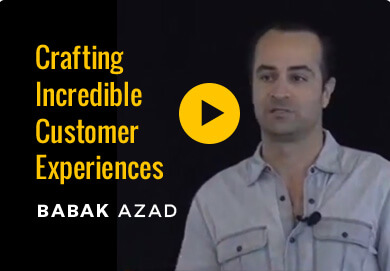Whether you think of yourself as a strong or a weak marketer, it’s likely you are not spending enough time working to keep your customers around longer. Most folks prefer climbing the next peak.
And yet, you’ve heard it a million times. It’s a ton easier to sell more to an existing customer than to a new one.
In previous posts, I’ve talked about the fact that every business is one way or another in a subscription model. You either have customers on recurring billing or are “just” trying to sell them again after their initial transaction.
In this post, I want focus on the traditional subscription (continuity) model, where a customer has signed up for a product or service that has a recurring billing component. That might mean monthly, quarterly or annually. The point is that every so often, a customer re-ups with you. That also means that every so often, they have an explicit opportunity to cancel or ask for a refund.
When I work with marketers about increasing their customer LTV and subscription stick rates, the below list details the top places I dig in. To make sure we understand what is happening at each level, to set a baseline (if necessary) of where they are, and to help inform prioritization of testing to improve that component of the business.
- Do you actually know your subscription / continuity take rate and your stick rate on an overall basis?
This is a simple (note, not always “easy”) one.
Sure you can go crazy by splicing and dicing your numbers countless ways. By cohort. By channel or front-end campaign. Gross or net of returns. By customer count and by revs.
But start with the basics. Of the people who start each month, how many are around for the next few billing cycles. Where are the biggest points where customers drop off? Just starting there will reveal a good bit of info and insight to help inform what you should be testing.
For those of you who are already doing so, hopefully I just gave you a few more ways to think about it. You can always get more sophisticated about how you segment your customers. And likely you’ll want to do different things for different segments.
But without a base level of understanding of where you’re at, it’s hard to know what to do next.
- Do you know the top 4 reasons customers are cancelling or asking for a refund?
Most likely the list includes “too expensive”, “don’t use the product”, etc. But you might have something totally different on your list, for example that your product is too complicated to use. While no one wants to hear that type of feedback, I’d always rather know that than not. Because depending on the order of the most prominent reasons, you can decide what to test next and how to tackle each reason.
- Do you have a cancel / save offer, script, and training when customers want to cancel?
Next, what do your agents say when a customer calls to cancel? Do they have specific guidelines or an outline to follow? Have you tested (and measured) different strategies? Ultimately, it’s a business decision on what kind of offers you might want to give to a customer. I’ll say that it drives me crazy when the mobile phone carriers offer me a big discount when I’ve called to cancel. Why did it take my wanting to cancel to get such a good offer? For your business, the scripting might include something as simple as probing why a customer is cancelling. Sometimes there’s a lack of information or training the customer needs. Whether or not a rep can keep a customer, at the least, that information needs to be documented and passed along to the appropriate person (See #1 above and #10 below).
- Do you have customer care agents or sales agents handling cancel / saves?
This is again another business decision, but if you want a true save strategy, I’d suggest that you test your sales agents, not your customer care agents, for this task. Sales vs. care agents are totally different people. Both should come from a place of providing value and service to a customer. But care agents generally have a softer demeanor, while sales agents are typically more skilled at overcoming objections, speaking to features, benefits, and value of an offer.
- Does the product actually meet the promise you made when the customer signed up in the first place?
This one sounds obvious, but beyond making sure your product is a good one, this point goes to real expectation matching. What does your customer actually think your product or service is going to do? Does their experience match that expectation?
Note, beware if you find yourself saying, “well, if only the customer watched the 20 minute tutorial or did x, y, or z, they would know what to do.” To those folks, I’d ask what guidance are you giving them to watch the tutorial or to know to take the additional action. At the same time, if your product is touted as “simple to use” and “you can get going in only 5 minutes”, then arguably it shouldn’t take a 20 minute tutorial to do so. Or if your site is so confusing that customers who are in fact looking for information can’t find it, I’d posit that your “simple” brand promise is not being delivered upon. Remember it’s not solely about a customer’s explicit use of your product or service. But rather their entire experience, from order entry to FAQ’s and customer support.
- What info do you put on the credit card descriptor?
You may or may not be as anal as your customers, many of whom look through every line of their credit card statement. Even though your customers may love you, if what shows up on their credit card statement seemingly has no relevance to the brand they interact with, their chances of challenging the charge and/or calling you to cancel will increase.
This kind of thing can happen for different reasons. Sometimes, a marketer has a business name that differs from the various products she sells. And so it’s simply easier to put the company name on the descriptor. This isn’t exclusive to folks intentionally trying to hide their brands from the company name – my guess is that anyone reading this is a purchaser of something from P&G (Proctor and Gamble) but doesn’t explicitly realize that P&G is the parent company.
Take a revisit of what appears on the credit card statement from a brand new customer’s perspective and think about whether or not it would confuse you.
- What happens when a customer’s credit card declines?
Do you have a process to retry, use Account Updater, or to possibly call a customer to let them know their credit card has declined? At the least, testing the frequency and overall quantity of retries is something all marketers should do. Whether that means every day for a week or two, or once a week for 4 weeks, the reality is that the cost per attempt is something you or your team should know (let’s say it’s roughly $0.10). Then it’s simply a matter of comparing the necessary success rate vs. your price point and margin.
Account Updater is something I’ve discussed previously, but the short version is that some banks provide a paid service to update the expiration date of a valid card but one that has simply gone past its expiration date. It’s an extremely rare customer that will call to update their expiration date. The beauty of the service is that you only pay per successfully-changed card.
Finally, depending on your price point, margin and call center fees, it might be worth exploring calling customers for whom their card has declined. By the way, one measure of knowing whether you are proud of your product/service or just trying to sneak under the radar on their bill is how you respond when you consider calling a customer. If your product is actually of true value, then while yes, some customers will take the call as an opportunity to cancel their subscription (how is this worse than the declined credit card by the way?), you should feel a responsibility to make sure your customers have uninterrupted access to your product.
- Do you send an email prior to a new billing period and offer additional products?
This might not seem obvious to extending stick rate. How would notifying people of an upcoming charge and/or offering them more to buy improve retention? Like many others out there, I’ve signed up for Dollar Shave Club and must say that their pre-shipment emails are some of the best I’ve seen. Not only am I informed about my next shipment and given the option to delay it, but they have a very slick one-click tool to add additional items to my order, shaving cream for example. I may not have needed new blades, but if I needed shaving cream, that keeps me on as a customer. At the least, they’ve added to the customer LTV. Best case, because I continue to think of myself as a Dollar Shave Club buyer, I’m more likely to keep my subscription active vs. cancelling altogether. Which either means new acquisition for them or reactivation, neither of which is easier than maintaining an existing customer relationship.
- Do you allow customization?
I alluded to this, but it deserves its own call-out. Increasingly, customers expect to have some level of control on when and what they receive. We no longer live in the world of one-size-fits-all. Customers may really like your product but aren’t using it at the pace you suggest. Or perhaps they have a busy travel schedule for the next month. Or maybe they use some of your products dramatically more than others (especially relevant for those in the beauty category). It’s preferable to give people the ability to customize their order online. But even if you market it online and only your reps can make the change, I would encourage you to test how much flexibility to give your customers. This is also where using customer feedback and cancelation reasons can help to inform where you start. If the number one reason people cancel is that they don’t use it (assuming it’s a consumable) as frequently as suggested – beyond revisiting the amount you’re shipping, how you help them consume the product, etc. – you might want to consider varying the quantity or frequency of their orders.
- Do you have someone accountable for retention marketing?
Whether you are a solopreneur or running a 9-figure business, if you have a subscription component of your business, someone should be working to improve it. It might be the difference between getting to the point where you can stop being a solopreneur and can hire someone. Or it might mean adding even more margin to your business. Regardless, do the math. How many people do you add onto a subscription each month? What’s the stick rate. How much do you have to move the needle to justify more attention or a hire to improve the value of those customers? Again, it might be just you for a while. Or it might just be a no-brainer to bring someone one. But make sure it’s an informed choice you’re making.
As one of my friends says, there’s never been a more difficult time to acquire a new customer. And yet, too often we keep focusing on getting new ones at the expense of maintaining our existing ones. With a bit of process and working at it, there are ways to keeping your customers around and happy a lot longer. But it requires attention and some testing.
Now it’s a matter of taking this playbook and applying it your business. The rewards are worth it.







Leave a Reply
You must be logged in to post a comment.